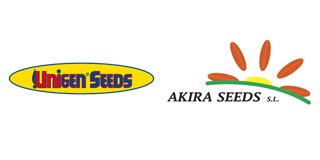
UNIGEN SEEDS SPAIN
Selected wastewater parameters from the vegetable washing process
This article follows selected parameters in wastewater which arise from the washing process for root vegetables, which is one of those problems which are current in terms of water usage. With a growing population, industrialisation, and urban development, there is also a growing demand for water resources. Industries which are dealing with the processing of agricultural products and food production in general significantly contribute to the growing consumption of water. Technology which is used for cleaning vegetables also significantly affect this growth in water consumption. Increasing demands on the quality of vegetables (eg. the cleanliness of vegetables at the point of sale), also leads to the necessity
21 August, 2017
This article follows selected parameters in wastewater which arise from the washing process for root vegetables, which is one of those problems which are current in terms of water usage. With a growing population, industrialisation, and urban development, there is also a growing demand for water resources. Industries which are dealing with the processing of agricultural products and food production in general significantly contribute to the growing consumption of water. Technology which is used for cleaning vegetables also significantly affect this growth in water consumption. Increasing demands on the quality of vegetables (eg. the cleanliness of vegetables at the point of sale), also leads to the necessity for more effective post-harvest cleaning, something which is carried out both with dry and wet methods. This article examines the cleaning process for selected root vegetables, particularly carrots and potatoes, by determining selected properties of the output process water in an assessed technological line. This line is specific with regard to its methods for cleaning carrots and potatoes. Following the investigation, the line was assessed as being satisfactory with respect to the quality of the input and output water. The monitored parameters of the process water (eg. concentrations of selected elements in the process water and concentrations of selected inorganic anions in the process water, mainly Na and Pb) from cleaning carrots and potatoes were considered as being satisfactory for recirculation into the cleaning process and therefore a reduction was achieved in overall water consumption. SourcesSelected wastewater parameters from the vegetable washing processVaculik, P.;?Smejtkova, A.;?Prikryl, M.;?Drabek, O.;?Votruba, Z.;?Lexa, L.?Faculty of Engineering, Department of Building Technological Equipment, Czech University of Life Sciences Prague, Kam?ck? 129, 165 21 Prague 6-Suchdol, Czech Republic.Author Email :?vaculik@tf.czu.czJournal article :?Agronomy Research?2017 Vol.15 No.Special Issue II pp.1426-1434 ref.14From?CABI Direct Picture, a Wyma Solutions?potato wash line, including two Barrel Washers and two Vege-Polishers









